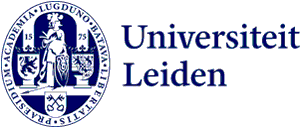
Ammodo Science Award to bring cultural heritage to life through play
A team with Leiden researchers has won the Ammodo Science Award for innovative humanities research on perceptions of cultural heritage. They are researching how ‘play’, such as the Minecraft video game, can help deepen our understanding of the past.
Heritage is considered important but is not always roundly appreciated. On the one hand, many people like playing games, but on the other, most don’t think they are very important. ‘We’re bringing these two strange bedfellows together in our Past ❤ Play’ project, says Angus Mol, an associate professor at the Leiden University Centre for the Arts in Society. ‘We want to understand how we can use play to bring people closer to the past. So they get more of a feeling for it, understand it better and take better care of it.’
The researchers Angus Mol, Aris Politopoulos and Sybille Lammes, and Csilla Ariese from the Reinwardt Academy are thrilled to have won the award for research that is out of the ordinary in academia. ‘Play is the central theme of our research and that is new’, says Mol.
Ammodo Science Award
As the winner of the Ammodo Science Award, the Past ❤ Play project will receive 800,000 euros. Ammodo (an art and science foundation) provides this award for groundbreaking research. The prize consists of 1,600,000 euros for each of the two domains of Natural Sciences and Biomedical Sciences and 800,000 for each of the two domains of Humanities and Social Sciences. The teams can use the money in the coming years to explore new fields of research.
Minecraft
The team knows from previous research that play brings people closer to the past. They used the popular video game Minecraft to rebuild cultural heritage with schoolchildren in Rabat (Morocco). ‘At first glance, Minecraft would seem to have little to do with the past but it is a game full of creative potential. A kind of Lego for the new generation’, says Aris Politopoulos, an assistant professor and archaeologist.
The children had to rebuild a historical city gate in Minecraft. ‘Then they had to ask all sorts of questions and make all sorts of decisions’, says Mol. ‘What did the gate look like? How did the gate work? What ships sailed through it? The combination of history and play sparked curiosity and connections.’
Research in different countries
With their follow-up study, the researchers want to link the past to forms of play in three different locations: Morocco, the Caribbean and a city in the Netherlands. By comparing play cultures and perceptions of heritage in these three places, they will be able to explore the beginnings of broader patterns. The team will start by researching what types of games are played at the different locations and will then use that in its research. ‘We want to look at what local game cultures there are and what people consider important when it comes to heritage. And if a local community does not find heritage important, we also want to know why that is.’
Text: Dagmar Aarts
Photo: Crafting Heritage Experiences
